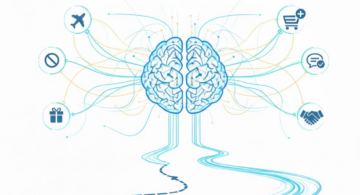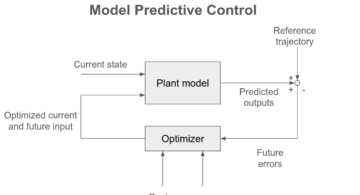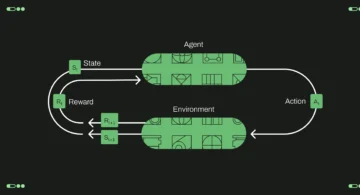Eyes, JAPAN
Blockchain’s Key Application: The Future of DAPPs
WANG WEIYU
As blockchain and cryptocurrencies gain widespread attention, decentralized applications (DAPPs) are emerging as a significant part of the blockchain ecosystem. With their unique decentralized architecture and security features, DAPPs are becoming one of the most popular blockchain applications. They are transforming industries by enabling secure, transparent, and autonomous applications that do not rely on any central authority. This article delves into the world of DAPPs, covering their definition, how they work, their key advantages, current challenges, and future potential across industries.
1. What is a DAPP?
A DAPP, or decentralized application, is a type of application built on blockchain technology. Unlike traditional applications, which rely on central servers and databases controlled by a company, DAPPs operate on smart contracts on the blockchain. This decentralized structure makes them highly resilient to manipulation, censorship, and external attacks. Since there’s no central authority, DAPPs are maintained and managed by a network of nodes—essentially users within the community who uphold the application.
The transparency of blockchain technology enables DAPPs to operate openly, with all transactions visible and verifiable on the blockchain. This transparency fosters trust among users and gives DAPPs a distinct advantage over conventional applications, especially in sectors that prioritize data security and privacy. Moreover, DAPPs are resistant to network congestion and DOS attacks, providing high reliability and security that make them increasingly attractive for use cases requiring trustless environments.
2. How DAPPs Work
DAPPs combine a familiar user interface with a decentralized backend powered by smart contracts on a blockchain.
- Frontend: The frontend of a DAPP is similar to traditional applications. It typically includes a user-friendly interface, allowing users to interact with the application and execute commands seamlessly. This can be a website, a mobile app, or even a desktop application, depending on the purpose of the DAPP.
- Backend: Unlike traditional applications that use centralized servers, DAPPs operate through smart contracts deployed on a blockchain. These smart contracts serve as self-executing codes that automate and enforce the terms of agreements between parties without intermediaries. Once deployed, smart contracts are immutable, meaning that their code cannot be changed without consensus, ensuring that DAPPs operate exactly as programmed. This backend allows DAPPs to provide a transparent, verifiable, and trustless environment for users, and the code is public for auditing, adding to their transparency and security.
- Blockchain Integration: To interact with the blockchain, DAPPs typically use a wallet (such as MetaMask or Trust Wallet) that allows users to sign in securely, manage assets, and confirm transactions. This integration bridges the gap between the application’s interface and the blockchain’s immutable record-keeping.
3. Key Advantages of DAPPs
DAPPs offer numerous advantages that set them apart from traditional applications:
– Decentralization: DAPPs eliminate the need for a central governing body or authority, reducing transaction costs and eliminating single points of failure. The decentralized nature of DAPPs enables users to have greater control over their data and transactions without requiring trust in an intermediary.
– Transparency and Reliability: With open-source code, DAPPs promote transparency, as anyone can view and audit the application’s code. This openness instills trust, as users can independently verify that the application operates as intended. The reliability of smart contracts, which automatically enforce agreements, further enhances trust.
– Resilience to Censorship: Due to their decentralized nature, DAPPs are resistant to censorship. No central entity can unilaterally decide to shut down a DAPP, block access, or censor specific users, making them suitable for social platforms and applications in regions where freedom of expression is restricted.
– Interoperability and Open Integration: DAPPs can easily integrate with other DAPPs or external applications, offering the potential for unique combinations of services. For example, a decentralized financial (DeFi) DAPP might integrate with a gaming DAPP to offer real financial incentives within a virtual game world. This open and modular architecture allows for innovation and a flexible ecosystem of applications that can interact and build upon each other.
4. Challenges Facing DAPPs
While DAPPs offer numerous advantages, they also face several challenges:
– Scalability Issues: One of the main hurdles for DAPPs is scalability. Public blockchains, such as Ethereum, have limited throughput, which can slow down as usage increases. This bottleneck can lead to higher fees and slower transactions, impacting user experience.
– User Experience: For non-technical users, DAPPs can be challenging to use, especially when it comes to managing private keys, using cryptocurrency wallets, and paying transaction fees. User education and interface improvements are needed for broader adoption.
– Regulatory Concerns: DAPPs operate in a decentralized, often anonymous manner, which can be at odds with regulatory standards around identity verification, anti-money laundering (AML), and data privacy. Navigating these regulations while maintaining the integrity of decentralization is a balancing act for developers.
– Security Risks: Although DAPPs are highly secure, they are not immune to vulnerabilities, especially if the code of the smart contract has flaws. A single bug can result in loss of funds or compromise the entire application, making thorough auditing and testing essential.
5. The Future Potential of DAPPs
The future for DAPPs appears promising, with diverse opportunities for expansion across sectors. DAPPs have already demonstrated their value in decentralized finance (DeFi), gaming, social media, and marketplaces. Their potential is particularly strong in industries that require trustless systems and secure data management:
– Finance: DeFi platforms are revolutionizing finance by offering decentralized loans, savings, and exchanges without intermediaries, allowing users worldwide access to financial services with just an internet connection.
– Healthcare: DAPPs can enhance the security and accessibility of medical records, allowing patients to control and share their data securely with healthcare providers. Blockchain-backed healthcare DAPPs can reduce data tampering, protect patient privacy, and streamline cross-institutional data sharing.
– Supply Chain Management: By utilizing blockchain transparency, DAPPs can track the entire lifecycle of products, from production to delivery. This level of visibility can improve accountability, reduce fraud, and enhance efficiency across global supply chains.
– Digital Identity Verification: DAPPs have the potential to revolutionize digital identity by creating a secure, decentralized system for verifying and managing identities. This can provide users with control over their identity information and enable secure access to services without relying on centralized databases.
– Real Estate and Voting Systems: DAPPs could be used to automate real estate transactions, reducing paperwork and increasing security. In voting systems, DAPPs could offer a transparent, secure, and tamper-proof mechanism for digital voting, enhancing democratic participation and trust.
6. Conclusion
As decentralized applications, DAPPs have established a strong foothold in the blockchain industry thanks to their reliability, security, transparency, and adaptability. With continuous technological advancements addressing current challenges and growing demand, DAPPs are expected to play an increasingly essential role in driving innovation across industries. Whether in finance, healthcare, or digital identity, DAPPs hold the potential to transform how we interact with technology, making them a key component of the future decentralized digital landscape.

 2025/12/12
2025/12/12 2025/12/07
2025/12/07 2025/11/06
2025/11/06 2025/10/31
2025/10/31 2025/10/24
2025/10/24 2025/10/03
2025/10/03 2025/08/30
2025/08/30 2025/08/22
2025/08/22